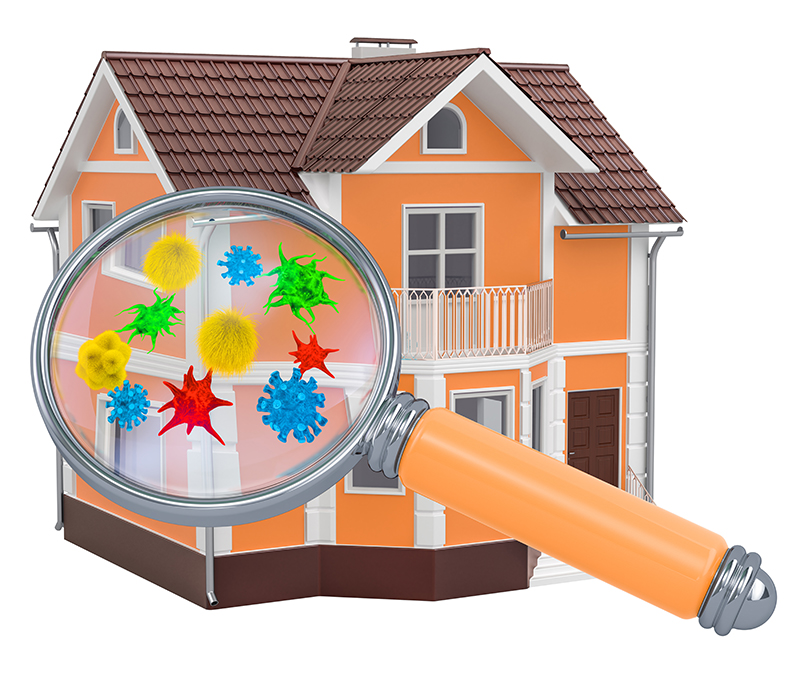We spend much of our day indoors, either at home, work or school and even more so in recent times due to a certain lock-down, but do we give any consideration about the quality of the air we breathe indoors?
It has been said that on an average road with normal traffic the air might be cleaner than that found in a home. Studies indicate that certain harmful air pollutants may be lurking indoors in higher concentrations than can be found in certain outdoor scenarios. Traditionally, consideration has almost always been directed towards external air pollution, particularly from large industrial installations and vehicle emissions. The threat from indoor air pollution has only become come to the fore in the past few decades.
Air Quality
The quality of the air we breathe at home or work can vary greatly depending on the materials used to construct the home or office, furnish, decorate, clean and ventilate them. To people with compromised immune systems such as those with asthma and other chronic respiratory diseases, poor air quality can prove very harmful.
Typical indoor air pollutants include radon, tobacco smoke, particulates and gases from burning fuels, candles and incense, polish, various chemicals and seasonal allergens, Carbon Monoxide and Nitrogen Dioxide. Volatile organic compounds (VOC) found in building materials like formaldehyde and flame retardants in upholstery and other such materials are a ready source of internal air pollution.
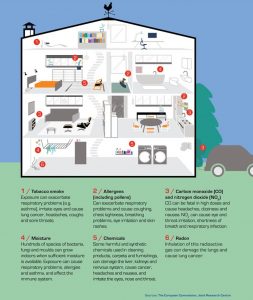
Interior air that has a high particulate count can trigger asthma attacks, as well as lead to irritated eyes, nose and throat, coughing and many other health-related issues. Atmospheric particulates of 10 µm in diameter include dust, pollen grains and mould spores which may lodge into the lungs and become a health issue. Smaller air particulates less than 2.5 µm (PM2.5) in diameter include smoke, smog, bacteria, fine dust and liquid droplets and these can lodge deeper into the lung tissues, causing longer-term illness. The European Environment Agency produces a yearly report concerning the effects of airborne pollution which can be found here.
Particulate Sensing and Control
The need for particulate sensing and control is steadily increasing around the world due to local regulatory and government requirements, especially in regards to its relation to health and well being. Particulate sensors can, therefore, play a critical role in measuring and managing interior air quality and fortunately, there is an abundance of Indoor Air Particulate Monitoring Sensors available. These clever devices can help ascertain the quality of the air that you (and if own a business your employees) are exposed too by measuring and recording a wide variety of known particulates and operating ventilation systems if required.
Sensory Solutions
Kempston Controls, one of the UK leading suppliers of sensory products stocks a select range of interior air pollution monitoring and control devices from the world’s leading brands. Each of these devices is ideal for monitoring a room for dangerous particulates and where applicable controlling the ventilation of interior spaces and alerting the users to possible dangers present in the air.
Below is a product low down, a snap-shot of some of the products we stock that are ideal for Controlling and Monitoring Air Quality for the Office and Home.
Siemens Smart Infrastructure QPA2002D Air Quality Monitor and Controller – Co2 and VOC
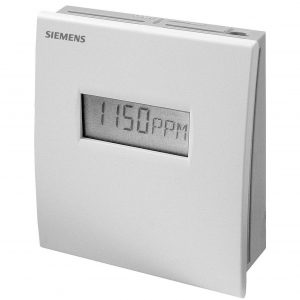
Designed to sense and monitor and display the concentrations of Co2 and VOC (Volatile Organic Compounds) and produce a demand signal to be interpreted by a ventilation system when Co2 and VOC parameters have been exceeded. Capable of detecting Co2 over a measuring range of 0-2000 ppm and VOC over Slow, Normal and Fast time constants and displaying the results on a high-contrast LCD. This capable Room Air Quality Sensor is ideal for home, office and small business room particulate management.
Learn More
Siemens Smart Infrastructure QPA2002 Air Quality Monitor and Controller – Co2 and VOC
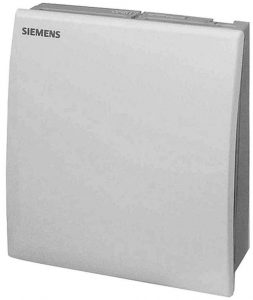
With the same specification as the 2002D model minus the facility to display the measured levels of particulate pollutants, a cheaper alternative when room monitoring and control are needed but visual feedback isn’t required.
Learn More
Siemens Smart Infrastructure QPA2000 Air Quality Monitor and Controller – Co2

Co2 concentrations in the air can cause headaches, dizziness, confusion and at extreme concentrations a loss of consciousness. This capable Air Quality Sensor monitors Co2 levels in a room or enclosure over the range of 0 -2000 ppm, triggering a ventilation response when established Co2 levels have been exceeded.
Learn More
Honeywell HAQSPA-R, Real-Time Air Quality Monitor
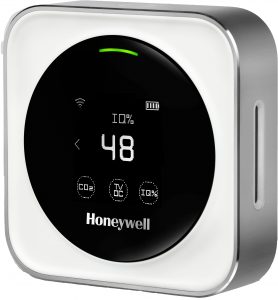
The Honeywell HAQSPA-R Indoor Air Quality Detector is a multi-functional wireless indoor air quality monitoring device capable of monitoring and then generating a wide variety of information concerning particulate pollutants, all in real-time. Monitors HCHO, TVOC, Co2, PM2.5, Temperature, Humidity, IQ% (the level at which cognitive function may be impaired by the current air quality) and features an OLED touch screen display.
Learn More
Kempston Controls is committed to finding you the ideal solution for your application. Call us today on +44 (0) 1933 411 411, email us at sales@kempstoncontrols.co.uk, or alternatively contact us here, we will be happy to help.
